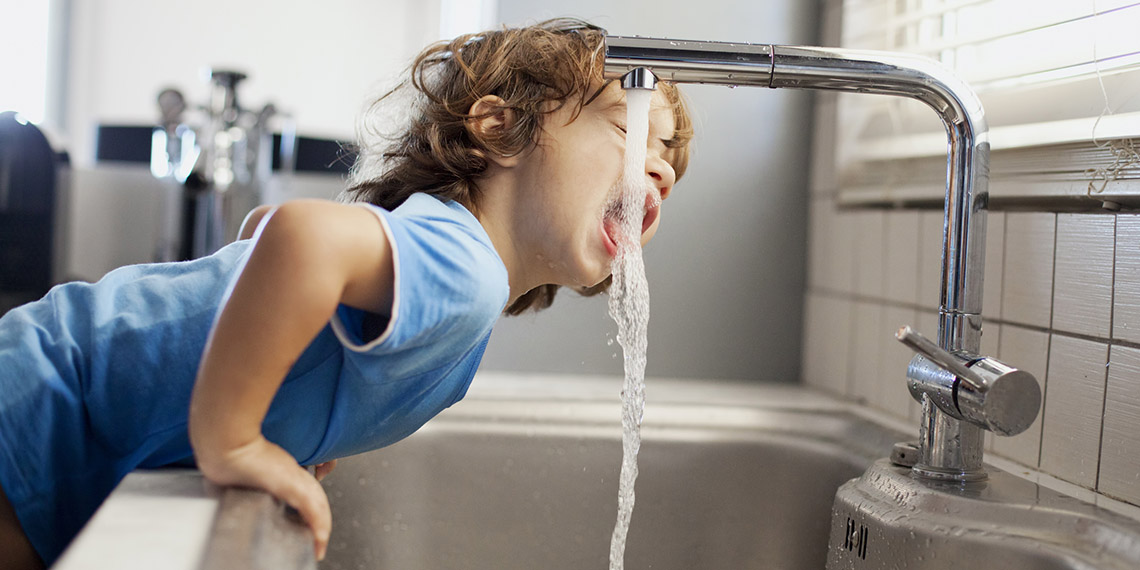I’ve done my own research: tackling community concerns about tap water

Stuart Khan had some questions.
Like, isn’t fluoride — the chemical that water treatment facilities add to our drinking water — actually very toxic? Is it damaging IQ levels? Why are we dumping this dangerous chemical into our water?
This was not actually Professor Stuart Khan, the esteemed water quality expert from the University of New South Wales. Instead, it was his conspiracy-prone alter ego who had shown up to appear as part of a panel at the Ozwater’22 session “Tap water is bad for you: fighting fiction and fake news”.
“I'm happy to admit that I'm not an expert on water quality, but I have done my own research,” a boisterous Khan lectured the rest of the panel.
“I can tell you, if you Google ‘toxic things in water’, it’s pretty scary. I've watched a lot of YouTube videos on water quality, so ultimately, I do have some expertise in the topic.”
Fortunately, some level heads were also on the panel, ready to dispel some of the wilder fears Khan was channelling.
“The evidence about fluoride being toxic often comes from groundwaters. In Europe, Pakistan, in parts of the African continent where there's a lot of high fluoride in the water it naturally causes quite serious symptoms,” said Dr Dan Deere, Water, Sanitation and Hygiene (WASH) Consultant at Water Futures.
“The levels of fluoride in tap water that we regulate to are those low levels — where they’re in the Goldilocks zone between not enough and too much — provided we control it at those levels, it's a good level to have it at.”
There is actually more fluoride in some bottled mineral waters than the recommended fluoride levels for water in Queensland, and people with a high seafood diet will ingest more of the chemical through their food.
The debate between Khan’s character and the experts on the panel wasn’t mere theatre. Dr Nikki Sims-Chilton, Senior Research Scientist at Seqwater, said utilities did hear concerns of the type Khan was expressing from members of the public.
“We've had a fair few customer complaints about fluoride in our water,” she said. “[One complaint said], ‘Just because people don't like to look after their teeth, it's not my problem … I'm blaming my drinking water for our ill health. I feel sorry for our children being poisoned from birth.”
Although the dental benefits of fluoride can be delivered through toothpaste, the panel acknowledged, expecting everyone to take responsibility for their own oral health decisions left some of the most vulnerable people behind.
“If everybody in the community had the knowledge and was making the choices themselves that wouldn’t be a problem,” Deere said.
“With fluoride, the people most at risk are young infants, young children, and they don't get a choice. They don't get the choice to decide whether to take fluoride tablets or to brush their teeth; they're relying on the people who look after them to do that. So if the people who look after them don't look after those kids’ teeth, they get bad teeth for life.”
It is the same logic, he said, that undergirds uncontroversial regulatory requirements to add thiamin to bread and iodine to salt.
Chlorine concerns
The panel also discussed customer concerns about disinfection byproducts produced by adding chlorine and other treatment chemicals to drinking water.
“There are huge studies about what is formed when water is chlorinated,” said Dr Melita Stevens, Principal Scientist at Melbourne Water. “Yes, they are toxic chemicals. Everything is toxic, if you put it in at a concentration high enough.”
But the quantity of chemicals used to disinfect drinking water are very low, she said, and the miniscule risk of harm from them was outweighed by the very real dangers of potentially deadly illnesses such as gastroenteritis or E. coli infection that can be transmitted through untreated water.
“It's not risk-free, drinking water,” Stevens said. “We're not saying it's 100 per cent safe — it can’t be. We've never said that. The water is not sterile, but if you take it away there are immediate and very, very measurable consequences, and you don't need a study with a million participants in it to know what happens if you take the chlorine away.
Getting the message out
Among the other customer concerns that the panel discussed were worries about chloramine and whether people might be sickened by insufficiently treated drinking water.
In response to concerns such as these, along with other public anxieties about tap water, panel facilitator Emily Quek, Water Quality Manager at Trility, offered some suggestions.
“As individuals, we can be curious, we can ask people why they actually think or believe that,” she said. “Respond with respect. If you've got the bandwidth, help to correct misunderstandings or incorrect information [and] do it in a more respectful way.
“If it's something you don't feel comfortable with, maybe just send them around to get more information from professional communications for guidance or look for industry resources.”
And at an industry level, it was important for all the organisations involved to be consistent in their messaging.
“We should work together to put out facts — general reflections — together and have a consistent message instead of having different messages and confusing the community,” Quek advised.
“Have engineers and scientists working with comms together. I think that is also very important because communications [staff] generally don't have a lot of information about water quality or water safety.”


